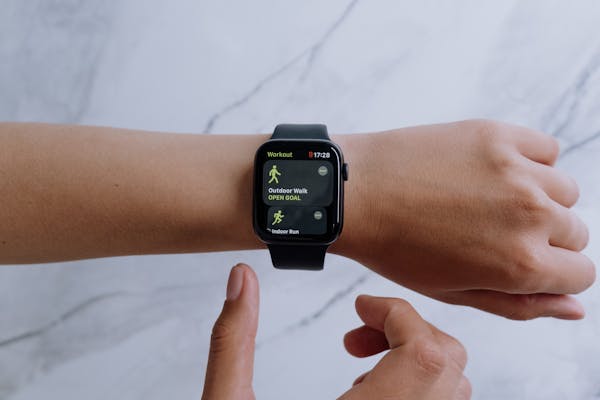
Wearable technology has emerged as a transformative force in various sectors, particularly in healthcare. The integration of these advanced devices into rehabilitation processes is creating new paradigms for patient care, offering personalized, data-driven approaches to recovery. This article explores the various facets of wearable technology for rehabilitation, examining its benefits, applications, and future potential in enhancing patient outcomes.
The Evolution of Wearable Technology
Wearable technology has come a long way from its inception. Initially, devices like pedometers and heart rate monitors were primarily used for fitness tracking. However, with advancements in technology, wearables have evolved to include sophisticated devices capable of monitoring a wide range of physiological parameters. These include smartwatches, fitness trackers, smart clothing, and medical devices specifically designed for rehabilitation.
The Role of Wearable Technology in Rehabilitation
1. Monitoring and Data Collection
One of the primary benefits of wearable technology for rehabilitation is its ability to monitor and collect data continuously. Devices such as smartwatches and fitness trackers can monitor heart rate, steps taken, sleep patterns, and other vital signs. For patients undergoing rehabilitation, this continuous data collection is invaluable. It allows healthcare providers to track real-time progress, make data-driven decisions, and adjust treatment plans as needed.
2. Personalized Rehabilitation Programs
Wearable technology enables the creation of personalized rehabilitation programs tailored to individual needs. By analyzing the data collected from wearables, healthcare providers can design specific exercises and activities that target the patient’s unique conditions and requirements. This personalized approach not only enhances the effectiveness of rehabilitation but also increases patient engagement and adherence to the program.
3. Remote Monitoring and Telehealth
The integration of wearable technology with telehealth platforms has revolutionized remote monitoring. Patients can now undergo rehabilitation from the comfort of their homes while still being closely monitored by healthcare professionals. Wearable devices transmit real-time data to healthcare providers, who can then provide immediate feedback and support. This remote monitoring capability is particularly beneficial for patients with mobility issues or those living in remote areas.
Types of Wearable Technology for Rehabilitation
1. Smartwatches and Fitness Trackers
Smartwatches and fitness trackers are among the most commonly used wearable devices in rehabilitation. These devices can monitor a variety of physiological parameters, including heart rate, activity levels, and sleep patterns. They can also provide reminders for medication and exercise, helping patients stay on track with their rehabilitation programs.
2. Smart Clothing
Smart clothing, embedded with sensors and electronic components, is gaining popularity in the field of rehabilitation. These garments can monitor muscle activity, posture, and body movements. They are particularly useful in physical therapy, as they provide real-time feedback to both patients and therapists, helping to correct movements and improve exercise techniques.
3. Exoskeletons
Exoskeletons are wearable robotic devices designed to support and enhance human movement. They are particularly beneficial for patients with mobility impairments, such as those recovering from spinal cord injuries or strokes. Exoskeletons can assist with walking, standing, and other movements, facilitating the rehabilitation process and improving the patient’s quality of life.
4. Neurorehabilitation Devices
Wearable technology has also made significant advancements in neurorehabilitation. Devices such as brain-computer interfaces (BCIs) and neurostimulators can help patients with neurological conditions regain motor function and cognitive abilities. These devices can stimulate specific brain regions or interpret brain signals to control external devices, offering new possibilities for rehabilitation.
Case Studies and Applications
1. Stroke Rehabilitation
Stroke patients often face significant challenges during their recovery, including impaired motor function and mobility. Wearable technology has shown great promise in stroke rehabilitation. For example, exoskeletons can assist stroke patients in relearning how to walk, while smart clothing can provide real-time feedback on their movements, helping to correct gait abnormalities.
A study conducted by the University of South Carolina demonstrated the effectiveness of wearable technology in stroke rehabilitation. Patients who used wearable devices to monitor their progress and receive feedback showed significant improvements in their motor function compared to those who did not use wearables.
2. Orthopedic Rehabilitation
Patients recovering from orthopedic surgeries or injuries can benefit greatly from wearable technology. Fitness trackers and smartwatches can monitor physical activity levels and ensure that patients are adhering to their prescribed exercise regimens. Additionally, smart clothing can provide feedback on posture and movement, helping patients perform exercises correctly and avoid further injury.
A case study involving patients recovering from knee replacement surgery found that those who used wearable devices for rehabilitation reported faster recovery times and higher satisfaction levels. The continuous monitoring and personalized feedback provided by the wearables played a crucial role in their recovery.
3. Cardiac Rehabilitation
Cardiac rehabilitation is a critical component of recovery for patients who have experienced heart attacks or other cardiovascular events. Wearable technology can play a vital role in monitoring heart health and ensuring that patients are engaging in safe and effective exercise routines. Devices such as heart rate monitors and smartwatches can track heart rate, blood pressure, and other vital signs, providing valuable data to healthcare providers.
A study published in the Journal of the American College of Cardiology highlighted the benefits of wearable technology in cardiac rehabilitation. Patients who used wearables to monitor their progress showed better adherence to their rehabilitation programs and improved cardiovascular health compared to those who did not use wearables.
Benefits of Wearable Technology for Rehabilitation
1. Enhanced Patient Engagement
One of the key benefits of wearable technology for rehabilitation is its ability to enhance patient engagement. The continuous feedback and real-time monitoring provided by wearables motivate patients to stay active and adhere to their rehabilitation programs. The gamification of rehabilitation exercises, where patients can set goals and track their progress, further increases engagement and adherence.
2. Improved Outcomes
Wearable technology enables healthcare providers to make data-driven decisions, leading to improved patient outcomes. Continuous monitoring and data collection allow for timely adjustments to treatment plans, ensuring that patients are receiving the most effective care. Additionally, the personalized approach made possible by wearable technology ensures that patients are engaging in activities that are specifically tailored to their needs, further enhancing the effectiveness of rehabilitation.
3. Cost-Effective Care
Wearable technology can also contribute to cost-effective care. By enabling remote monitoring and reducing the need for frequent in-person visits, wearables can help lower healthcare costs. Additionally, the early detection of potential issues through continuous monitoring can prevent complications and reduce the need for more intensive treatments, further reducing costs.
Challenges and Considerations
While wearable technology for rehabilitation offers numerous benefits, some challenges and considerations need to be addressed.
1. Data Privacy and Security
The continuous monitoring and data collection by wearable devices raise concerns about data privacy and security. It is essential to ensure that patient data is protected and that devices comply with relevant regulations and standards. Healthcare providers and technology developers must work together to implement robust security measures and protect patient privacy.
2. Accessibility and Usability
Ensuring that wearable technology is accessible and usable for all patients is another critical consideration. Devices must be designed with user-friendly interfaces and accommodate patients with varying levels of technological proficiency. Additionally, efforts must be made to ensure that wearable technology is affordable and accessible to patients from all socioeconomic backgrounds.
3. Integration with Healthcare Systems
The integration of wearable technology with existing healthcare systems and electronic health records (EHRs) is essential for maximizing its benefits. Seamless integration allows for the efficient sharing of data between patients, healthcare providers, and other stakeholders. It also ensures that wearable technology can be effectively incorporated into the overall healthcare workflow.
Future Directions and Innovations
The future of wearable technology for rehabilitation holds exciting possibilities. Ongoing advancements in technology and research are likely to lead to the development of even more sophisticated and effective devices.
1. Artificial Intelligence and Machine Learning
The integration of artificial intelligence (AI) and machine learning (ML) with wearable technology has the potential to revolutionize rehabilitation. AI and ML algorithms can analyze vast amounts of data collected by wearables, providing deeper insights into patient progress and predicting potential issues. These technologies can also enable the development of more personalized and adaptive rehabilitation programs.
2. Advanced Sensor Technology
Advancements in sensor technology will further enhance the capabilities of wearable devices. New sensors that can monitor a broader range of physiological parameters with greater accuracy will provide more comprehensive data for rehabilitation. Additionally, the development of non-invasive sensors that can monitor internal body processes will open new possibilities for wearable technology.
3. Augmented Reality and Virtual Reality
Augmented reality (AR) and virtual reality (VR) are emerging technologies that hold great promise for rehabilitation. AR and VR can create immersive environments that simulate real-world scenarios, allowing patients to practice movements and activities in a controlled setting. These technologies can also provide visual and auditory feedback, enhancing the rehabilitation experience and improving outcomes.
Conclusion
Wearable technology for rehabilitation is transforming the healthcare landscape, offering new possibilities for personalized, data-driven care. From monitoring and data collection to personalized rehabilitation programs and remote monitoring, wearable devices are enhancing patient engagement, improving outcomes, and contributing to cost-effective care. While challenges such as data privacy and accessibility need to be addressed, the future of wearable technology in rehabilitation is bright, with ongoing advancements and innovations promising even greater benefits for patients and healthcare providers. As technology continues to evolve, wearable technology will play an increasingly important role in shaping the future of rehabilitation and healthcare.

